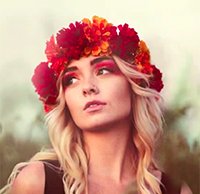Absolutely everything you need to know about retouching portraits
posted Friday, November 20, 2015 at 7:16 AM EDT

Photographer, retoucher, and staff writer Dani Diamond at Fstoppers has written a complete guide to retouching portraits in Photoshop for free. You can't beat free!
The article includes five years of Dani's research for tutorials. He has waded through the vast ocean of articles, guides, and tutorials to bring us only the best dozen tutorial videos. There's more to a great portrait than just excellent editing and retouching though, he warns, you've got to start with a great image and use Photoshop to enhance the image, rather than to fix it.
Portrait photographers often take hundreds of images during a photoshoot, so you've got to use Bridge (or some other library management tool) to find the images that speak to you the most before moving forward with the editing process. Once you've done that and are ready to edit, it's time for a bit of RAW processing. In Camera RAW, avoid any heavy-handed adjustments and opt instead for subtle changes.
After RAW processing is complete, it's time for spot healing. Dani has found an excellent tutorial from Jack Salzke for healing spot blemishes (although Dani warns to ignore the bit about bags under the eyes). Check it out below.
Now it's time for frequency separation, which is a fancy technique for fixing issues with skin tones. Check out this tutorial below from Phlearn.
There are many more tutorials that Dani has included for skin tones, including some that utilize simpler techniques than the ones used in the above video. Be sure to check out his article to see them all.
Okay, so we've selected the images, processed the RAW files, fixed blemishes, and dealt with skin tone issues. It's time for dodging and burning, which Dani calls the "most important part of your workflow." Check out the video below from Phlearn to see "dodge and burn secrets."
There is much more to be done before your portrait is finished, such as adjusting the eyes and performing color toning and lighting, so check out the full article to see the rest of the tutorials.
(Seen via Fstoppers)